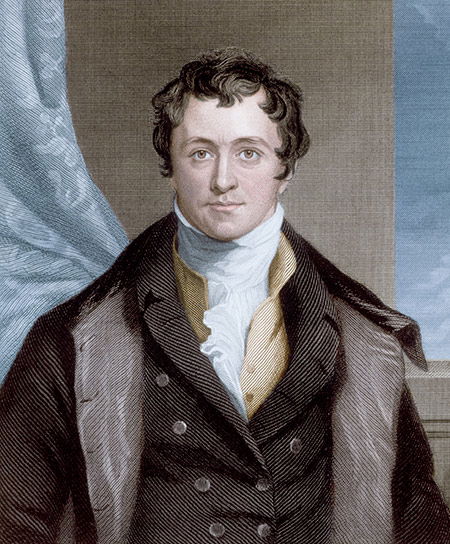Davy’s lamp described
The first effective miners' safety lamp was unveiled on November 9th 1815.

Mining was always a dangerous occupation and for centuries it was made worse because miners carried open candles, sometimes poked ahead on a long pole, to see their way through the tunnels and workings far below ground. This caused explosions of methane and other gases that miners called ‘firedamp’. In May 1812 at the Felling Colliery near Gateshead in County Durham 92 men and boys burned to death or suffocated in a particularly appalling disaster that spurred efforts to improve safety.
William Reid Clanny, an Irish doctor in practice near Sunderland, came up with a clumsy device in which the candle was inside a glass container. It was described in a paper read to the Royal Society in London in May 1813 and the following October saw the foundation of the Society for Preventing Accidents in Coal Mines. The future railway pioneer George Stephenson, then still a colliery engineer in Northumberland, turned to the problem and invented a lamp he demonstrated to colleagues in October 1815, but the Society had meanwhile approached Sir Humphry Davy and, rightly or wrongly, the credit for the first effective miners’ safety lamp was mainly given to him.
Davy was a Cornishman, born in obscurity in Penzance in 1778, who moved to London in 1801 and became a star of the Royal Society. A genius in the fields of chemistry and electricity, he made many discoveries and has been called the Isaac Newton of chemistry. He could explain scientific matters to the scientifically illiterate, his lectures drew crowds and he was knighted in 1812.
The Accident Prevention Society got in touch with him in August 1815. With Michael Faraday as his assistant, Davy began experimenting on firedamp and by the end of October 1815 he had a lamp with narrow metal ventilating tubes that prevented the candle flame setting off an explosion. He presented a paper describing it to the Royal Society on November 9th, to the fury of Stephenson, who accused Davy of stealing the idea from him, which Davy fiercely denied.
Davy honourably refused to patent his lamp. Both the Davy lamp and Stephenson’s ‘Geordie’ lamp were used in collieries and the number of explosions fell. Davy was rewarded with a baronetcy in 1818 and was president of the Royal Society from 1820 to 1827, but his health declined and he retired to Italy in 1829, settling in Rome, describing himself as ‘a ruin among ruins’. He was 50 when he died in a hotel on a trip to Geneva that year.




